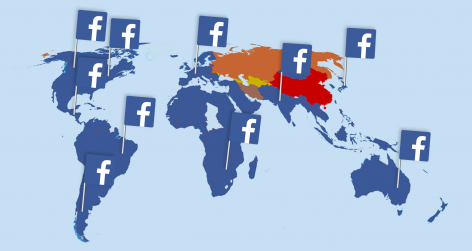Academic ‘open access’ journals make articles freely available and the dissemination of knowledge and citation easier. However, the pace of change is slow, writes Cristobal Cobo.

UNESCO convened in June 2012 the World Open Educational Resources Congress. One of its invited speakers was Harvard’s Lawrence Lessig – co-founder of Creative Commons – who explained that knowledge elites ought to ensure free access to content for those sections of the population who can’t pay for it. He emphasized that being a member of the academic community carries an obligation to enable access to one’s own work. Lessig also explained the importance of adopting new forms of access that remove unnecessary controls that are automatically built into the current system of publication. He added that while he believed that author rights are important (“I am against abolitionism… I think copyright is essential”) and did not believe in a dichotomy of “open” and “closed” work, he considered it important to recognize more flexible models of publication.
The ‘open access’ movement in the scholarly literature can offer promising possibilities for stimulating scientific work, by: a) providing access to research; b) speeding up scholarly communication and scientific dialog between researchers; and c) offering greater visibility and impact opportunities.
Today, bibliometric techniques are increasingly used as an intrinsic component of a wide range of evaluation exercises. However, the current tendency is for institutions to be graded more on the visibility of their products than on their long-term reputation or resources. The past few decades have seen a large number of citation analysis studies being undertaken in research fields from natural to social sciences and the humanities. Citation analysis results have also been used widely in scientific evaluation for considering the granting of tenure and the promotion of academics, amongst other purposes.
Citation indices offer a new mode of analysis of the popularity and impact of specific articles, authors, and publications. The introduction of the Journal Citation Reports (JCR) from Thomson Reuters had given bibliometrics a great methodological push. Science indicator research has also been instrumental for the development of measuring and analysing science since the 1970s.
A number of academic journal databases exist today, offering indices of citations between publications and mechanisms to establish which documents cite which other ones. They differ widely in cost to the user. Scopus and the JCR are major citation indexes that limit their records to those journals deemed by experts to be scholarly and significant to the journal’s given discipline. Both are subscription based, and therefore generally restricted to libraries. Other, free, citation indices include CiteBase, CiteSeerX, Google Scholar and Microsoft Academic Search.
The JCR’s citation indices have been used as the data source for most of the citation analysis studies reported in the literature to date. They have contributed significantly to the wide application of a citation analysis approach in various studies and in scientific evaluation, but have also drawn considerable criticism, especially when determine tenure decisions.
JCR is considered to be one of the largest and most influential academic citation databases, containing over 46 million records relating to 11,261 high impact journals including 1,400 journals that are open access. As Zhao acknowledges, it is well known that JCR citation indices are still the main data source for citation-based science evaluation, pushing scholars to publish in journals indexed there. Scopus is also regarded to be large, with 46 million records (Delasalle, 2012) relating to 18,500 peer-reviewed journals 1,800 of them open access. It is noteworthy that between them these two databases register about 10% of the open journals indexed in their respective databases.
According to the Directory of Open Access Journals (DOAJ), an authoritative listing of peer-reviewed scholarly open access journals, the volume of high quality peer-review journals is growing quickly, as is the number of authors who want to publish in open access journals.
DOAJ represents a great opportunity particularly for “hybrid open-access journals” where only some of the articles require payment and the rest are open access. ‘Gold’ and ‘Green’ open access journals also suggest new funding models according to Houghton & Oppenheim). Authors can use the Joint Information Systems Committee (JISC)-funded RoMEO, a searchable database of publishers’ policies with simple guidelines for publishing self-archiving journal articles.
JCR citation indices suggest a direct correlation between the number of times a particular article is downloaded and the number of citations it has in other indexed journals. Then again, the relationship may be more complex, since one study has posited a circular relationship, with downloads affecting citations, and citations in turn affecting downloads (Moed, 2005). Interesting studies on the relationship between citations and downloads can also be found for Citebase, an impact-ranked search service that indexes open access papers in ArXiv.
Other research indicates that free access to scientific articles increases the number of resulting citations; open access academic articles are cited by peers more quickly than articles published in non-open access journals. Studies indicate that open publications are therefore likely to benefit science by accelerating the uptake of research findings and by maximising the impact of scientific work, as (Eysenbach, 2006; Piwowar, 2010; Wagner 2010; Borgman 2011, Norris, Oppenheim, & Rowland, 2008) explain. However, it would be unfair not to mention that other authors have expressed skepticism about whether open access articles are cited frequently.
A remarkable example of a repository of open access academic content is the Social Science Research Network (SSRN), which encourages the early distribution of research results and content, downloadable at no charge to the user. SSRN has registered 56 million downloads to date, totalling 1,000,000 per month. The SSRN eLibrary has indexed 7.7 million references and 5.2 million citations.
The slow move of journals to open access and the low participation rate of university faculties in institutional repositories indicates that simply promoting the benefits of new formats of scholarly communication is not enough. If full-text, open access scholarly publications were to be used as data sources for citation-based science evaluation, scholars might be more willing to make their work available for open access.
Finally, it seems necessary to bring open access and new publication formats into the tenure evaluation system. Doing this could not only contribute to the tenure process, but may also serve to promote open access and more efficient knowledge dissemination. As many other times in history, the required mechanisms and technology to promote the change are already available, but cultural and institutional constraints make the transition to open particularly slow.
Cristobal Cobo is a research fellow at the Oxford Internet Institute. He works on the K-Network project, focused on creating a knowledge sharing and dissemination network to promote the exchange of good practices and implementation strategies for building a 21st Century Knowledge and Information Society.






















